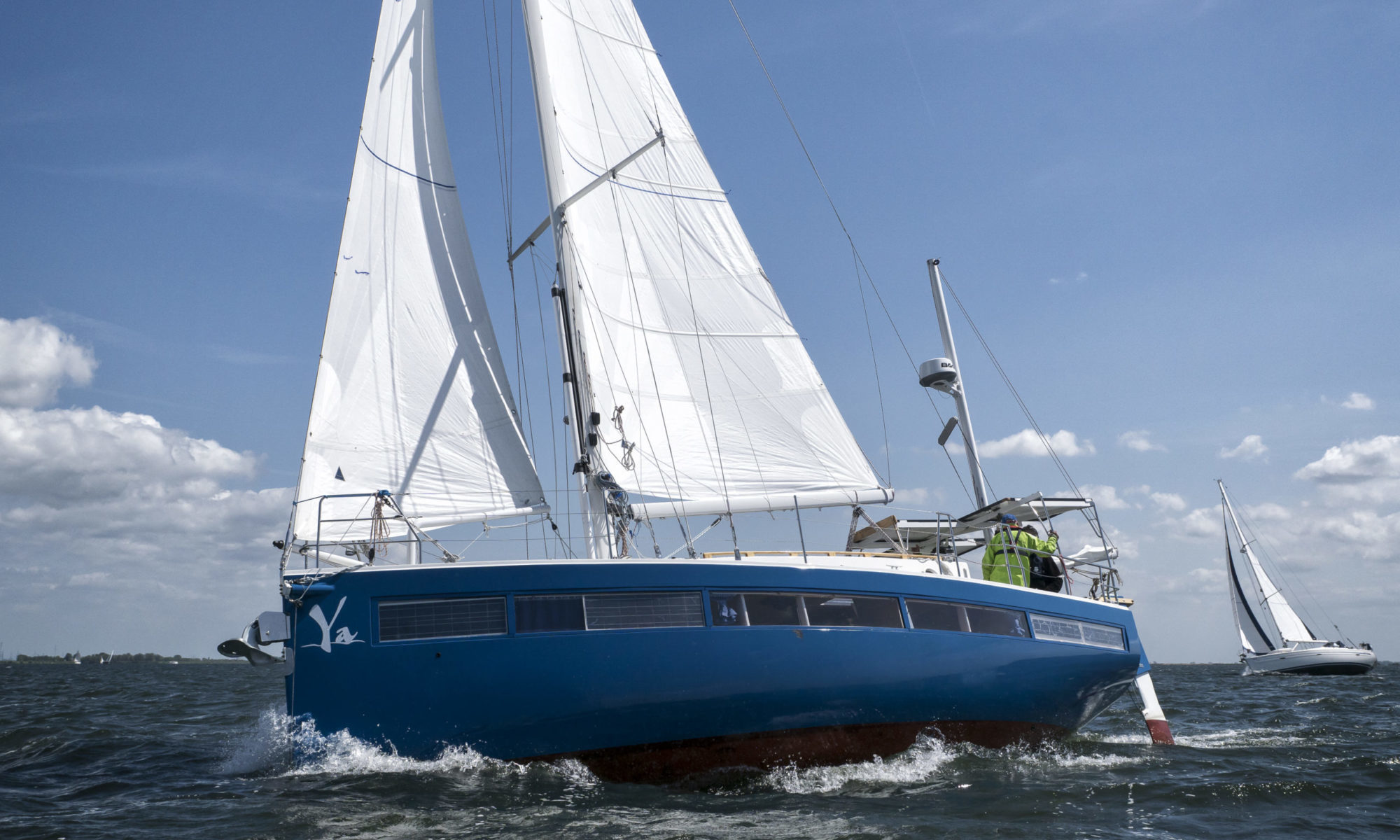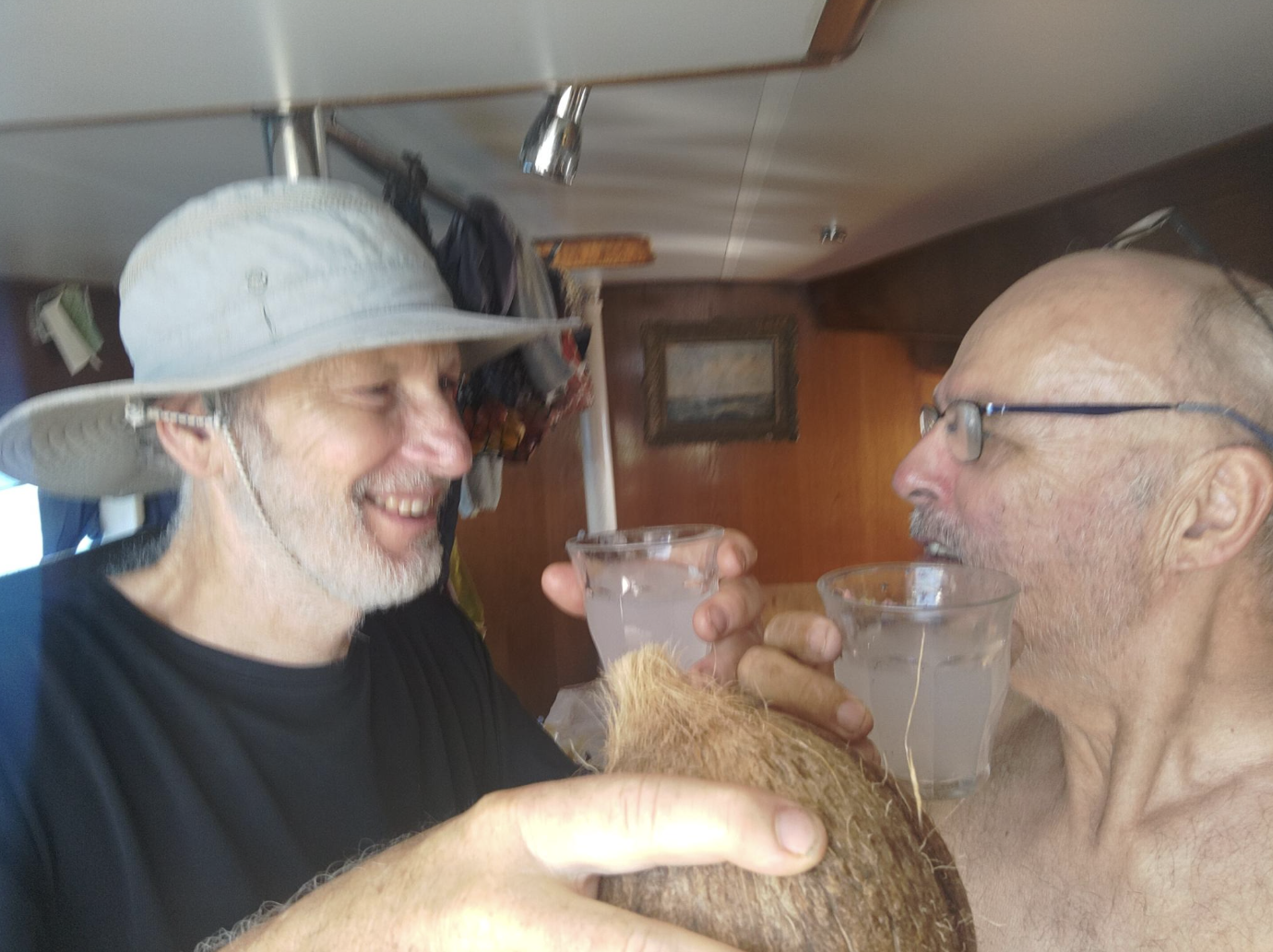Raroia is a typical atoll. On a vulcano and with the edges still under the sea, coral grows on it till a round ridge is formed.
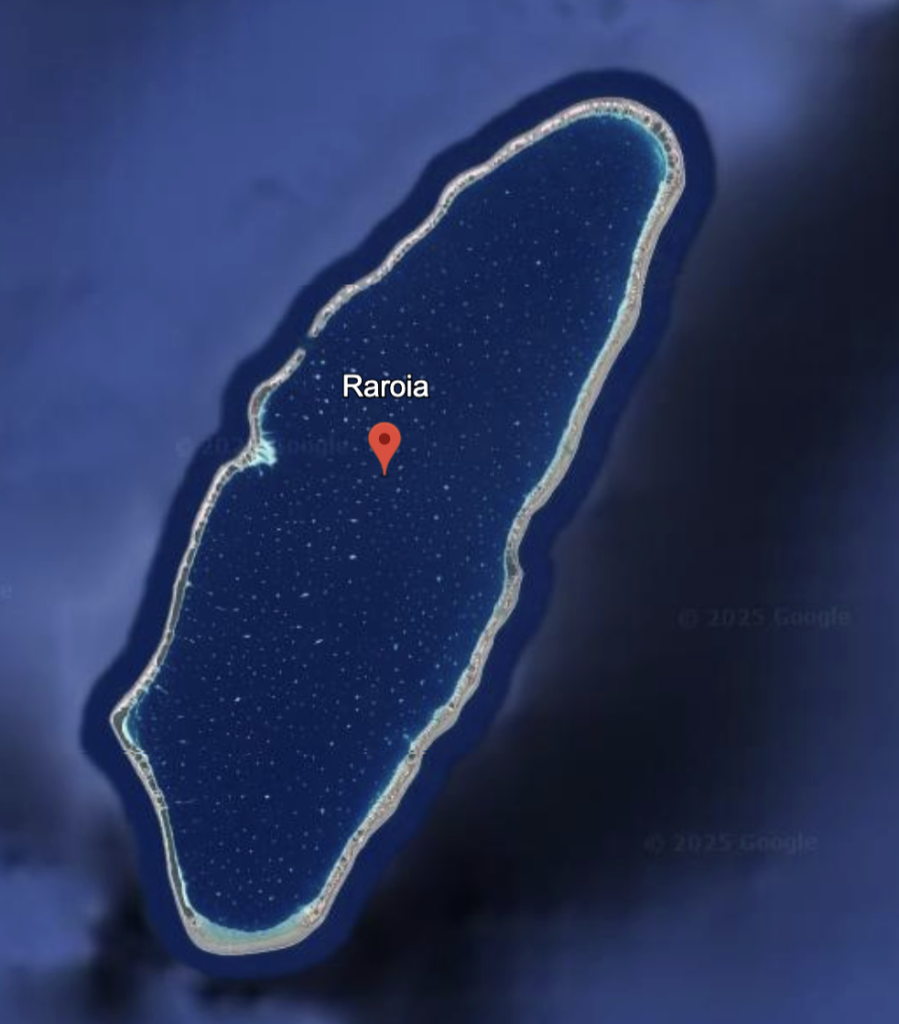
Entering through the pass
This island has many ‘holes’ where the water can get through, and when the waves are big and the tide is high, the tops of the breaking waves even flow into the inner ‘lagoon’. It brings much water into the atoll. After High Water, when it becomes ebb, a lot of water comes streaming out of the little pass on the west side. This means a lot of current against us when we have to get in. The currents can become 6 knots and sometimes even more. And 6 knots is our maximum boat speed!. But it is dangerous to go in by flood, with the current with us. Because the Eastern trade winds come from the other direction. Wind against current gives terribly steep breaking waves, and they easily throw a boat or ship on its side. When we arrived before the pass it was that time. A 13 meter ship tried it enter then, but was simply thrown back by the waves. He went back just before it became dangerous.
So we tried to pick the moment that the flood has slackened and the ebb has not yet started. You clearly could see the waves were a lot calmer, they were not steep anymore. When we came through, it was even calm. Just on the slack moment!
It was exciting to navigate. We anchored near the village. In one of the 50 houses there was even a bit of internet. Gaston and Karin were so friendly that we could use it. Gerard could sell us some vegetables and Favia served us a great Polynesian dinner.
Some hunting, the Kon-Tiki stranding and some antropology
On the East side there is a beautiful anchorage. It is well known as one of the top 15 beaches of the world. Andrew went with some children from another boat for a coconut crab hunt. You do that when it is dark. The big crabs can open coconuts with their bare claws, so it is a cautious work. In an hour they hunted down enough for the barbecue on the beach.
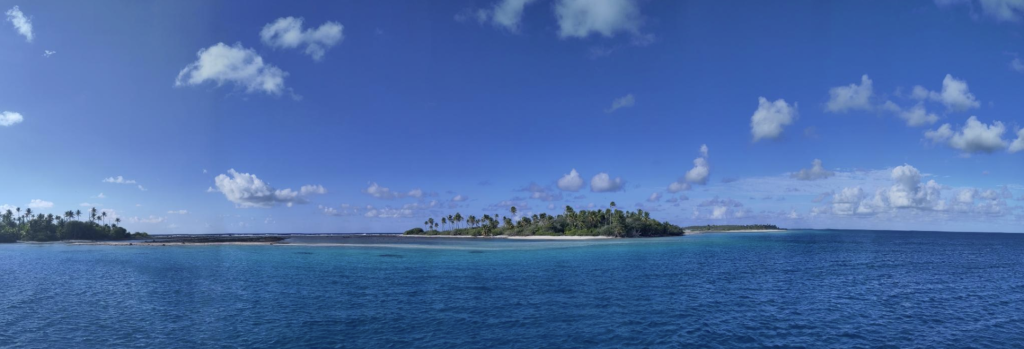
In 1947, the Kon-Tiki, a sailing raft, stranded here on the ocean side of the beach, after a 100 days sail-and-float from Peru. This way, the antrolopogist Thor Heyerdahl wanted to prove that the Polynesians had their origin in South America. (By the way, later was found by DNA research that they came from New Zealand and even South East Asia). He and his three fellow researchers landed safely on the island.
Happiness
One fellow antropologist, Bengt Danielsson, stayed for some years on the island and did participating research. In his book Raroia: Happy Island of the South Seas observed, “The Raroian peace stems from the fact that the people have no material anxieties and no other object in life than just to live” (Danielsson, 294).
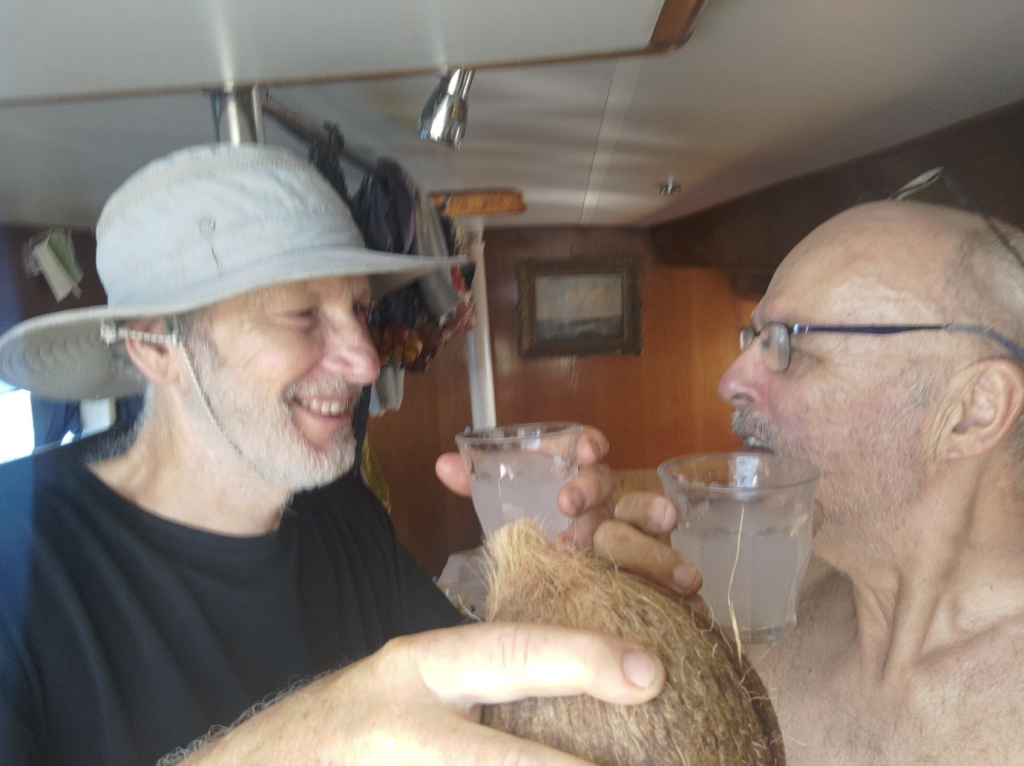
.
